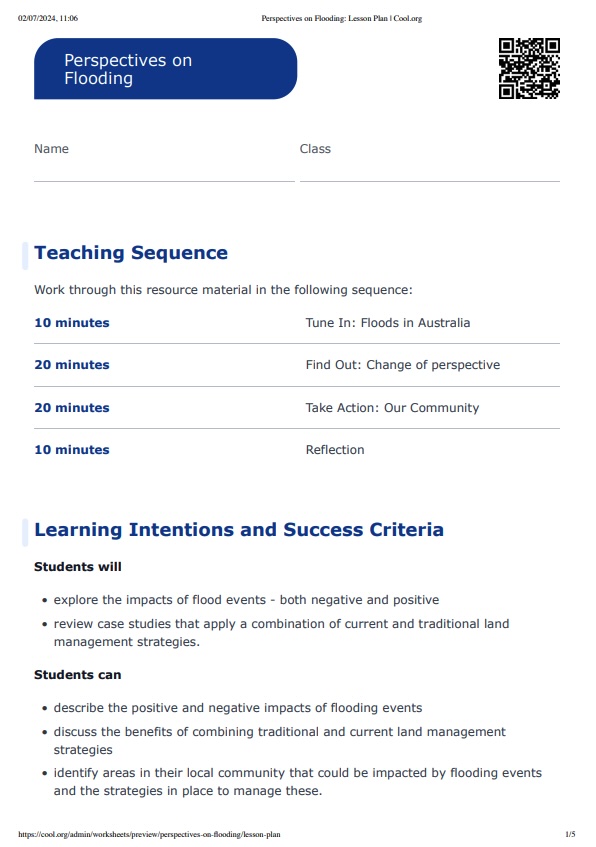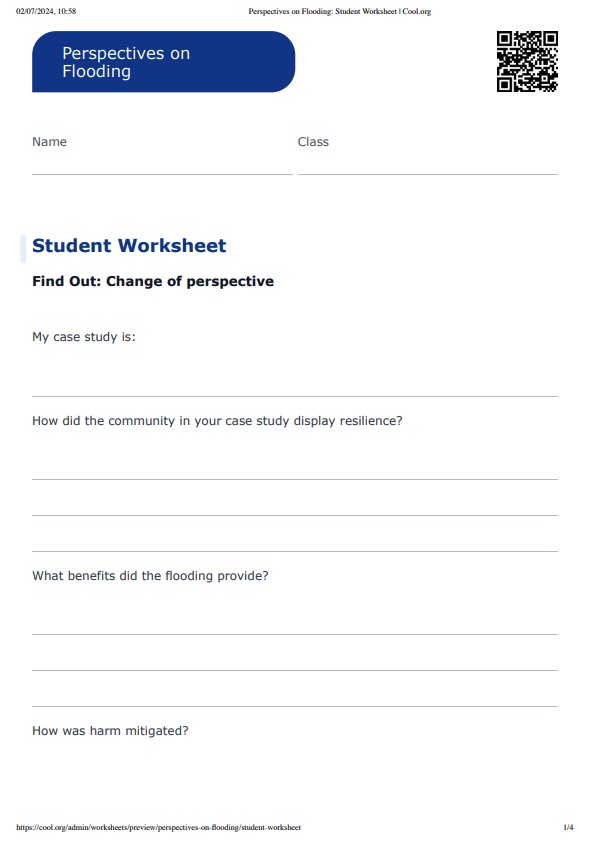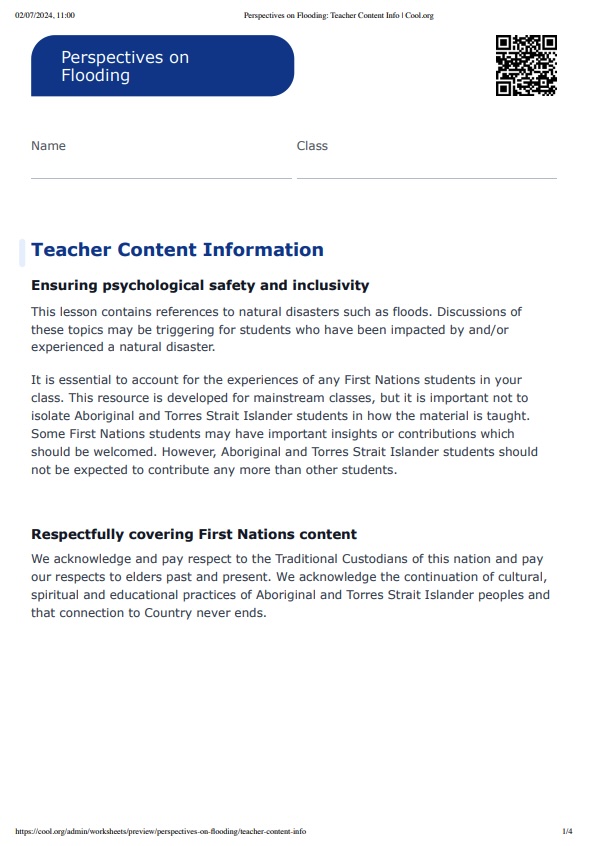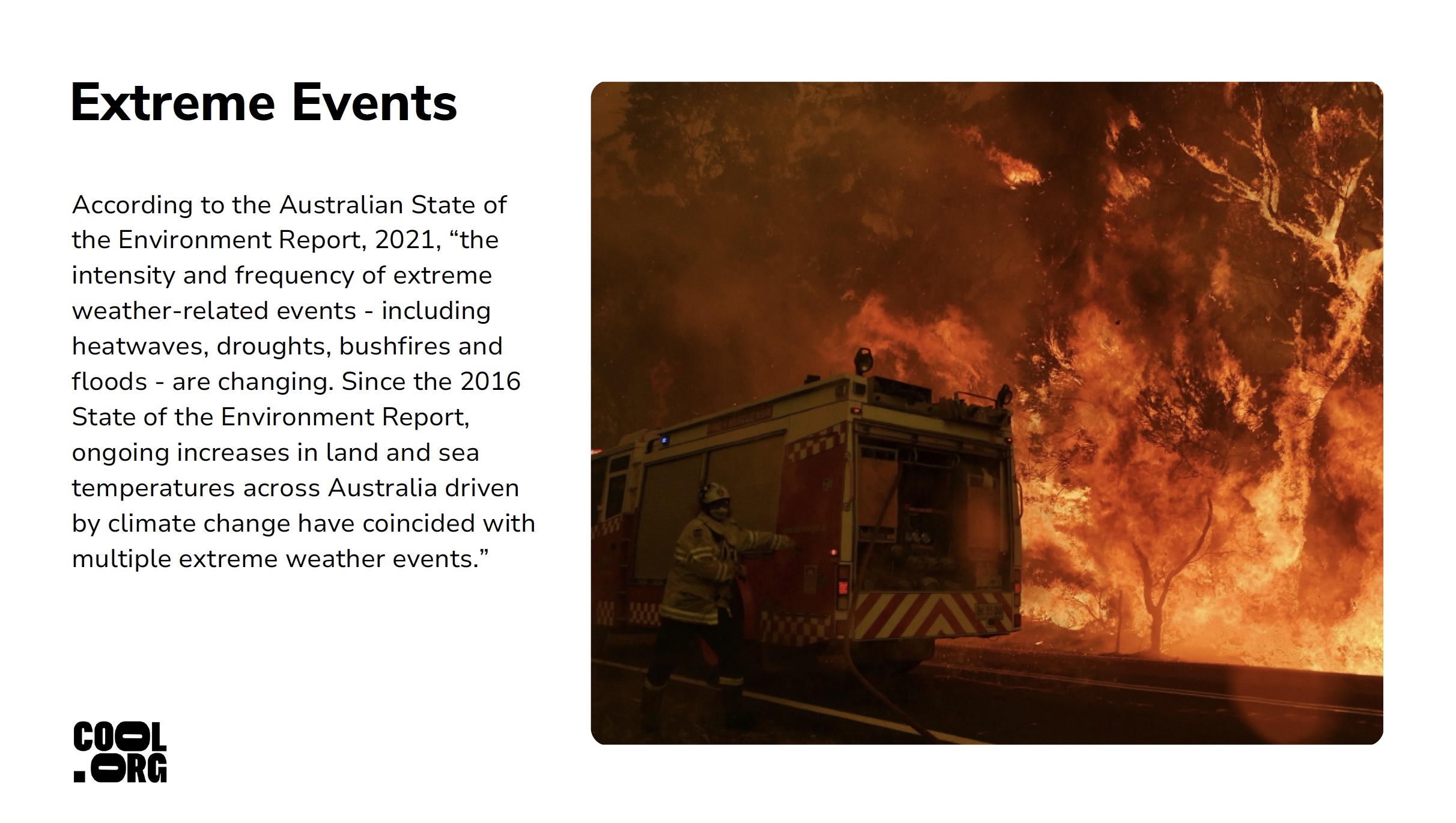Lesson summary
Students will explore the impacts of flooding events in Australia, with a particular focus on First Nations perspectives and experiences. Through a series of case studies, students will discover how Traditional Custodians are applying cultural knowledge to current-day land management situations.
Learning intentions:
Students will...
- explore the impacts of flood events – both negative and positive
- review case studies that apply a combination of current and traditional land management strategies.
Success criteria:
Students can...
- describe the positive and negative impacts of flooding events
- discuss the benefits of combining traditional and current land management strategies
- identify areas in their local community that could be impacted by flooding events and the strategies in place to manage these.
Lesson guides and printables
View Supporting Resources
Curriculum links
Select your curriculum from the options below.
Lesson details
Skills
This lesson is designed to build students’ competencies in the following skills:
- cultural understanding
- curiosity
- reflection
Curriculum Mapping
Australian Curriculum (v9.0) content description:
Year 10 Geography
- First Nations Australians’ approaches to custodial responsibility and environmental management in different regions of Australia (AC9HG10K03)
Relevant parts of Year 10 achievement standards: By the end of Year 10, students explain the effects of human activity on environments, and the effect of environments on human activity, over time.
NSW Syllabus outcomes:
- GE5-5: A student assesses management strategies for places and environments for their sustainability
- GE5-4: A student accounts for perspectives of people and organisations on a range of geographical issues
General capabilities: Intercultural Understanding
Cross-curriculum priority: Aboriginal and Torres Strait Islander Histories and Cultures, Sustainability
Level of teacher scaffolding: Medium - facilitate class discussion, scaffold independent review.
UN Sustainable Development Goals
- Target 15.1: By 2020, ensure the conservation, restoration and sustainable use of terrestrial and inland freshwater ecosystems and their services, in particular forests, wetlands, mountains and drylands, in line with obligations under international agreements.
Resources Required
- Australian State of the Environment 2021 Presentation
- Case Studies (Martuwarra Fitzroy River, Balnggarrawarra Melsonby Rangers, or Birrarung, one per group, digital or printed)
- Device to share presentation and video with students
- Devices for students to access online resources for research
- Student Worksheet
Additional Info
We would like to acknowledge and express our gratitude for the expertise and advice provided in the creation process of these resources from the following parties:
- The Australian Institute for Disaster Resilience (AIDR)
- Bhiamie Williamson (Monash University)
Related Professional Learning
How to Teach a Unit on Fire and Flood Resilience
Quick summary: This course will provide a roadmap for how to approach teaching a unit on fire and flood resilience. While primarily focused on fire and flood resilience, it will reference the importance of an all-hazards approach to disaster resilience education.








Welcome back!
Don't have an account yet?
Log in with:
Create your free Cool.org account.
Many of our resources are free, with an option to upgrade to Cool+ for premium content.
Already have an account?
Sign up with:
By signing up you accept Cool.org's Terms and Conditions(Opens in new tab) and Privacy Policy(Opens in new tab).